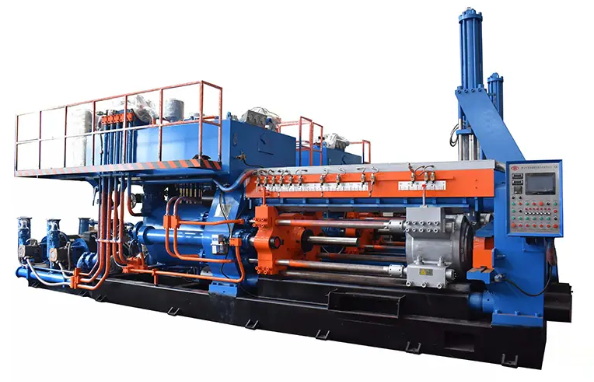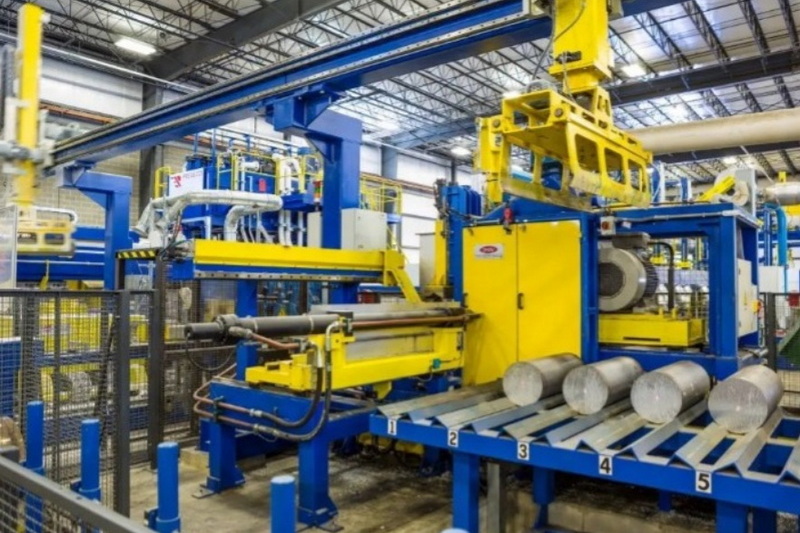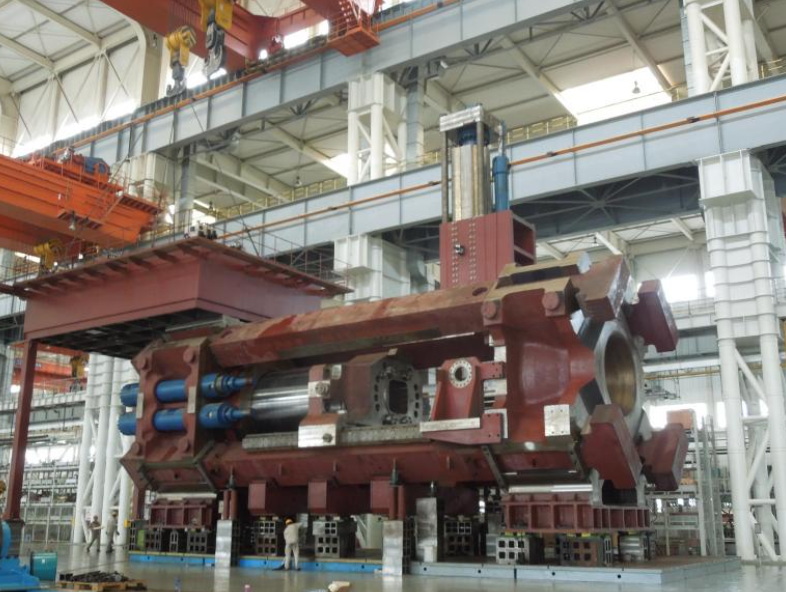Content Menu
● Understanding the Aluminum Extrusion Press Process
>> Aluminum Extrusion Press Process Outline
>>> 1. Die Design and Creation
>>> 2. Billet Preparation
>>> 3. Preheating
>>> 4. Loading the Extrusion Press
>>> 5. Extrusion
>>> 6. Cooling and Stretching
>>> 7. Cutting
>>> 8. Heat Treatment
>>> 9. Finishing
>>> 10. Quality Control
● Challenges in the Aluminum Extrusion Press Process
>> 1. Die Design and Manufacturing Challenges
>> 2. Material Selection and Preparation
>> 3. Temperature Control
>> 4. Press Operation and Pressure Control
>> 5. Profile Shape and Dimensional Accuracy
>> 6. Surface Quality and Finish
>> 7. Cooling and Quenching
>> 8. Environmental Factors
>> 9. Energy Efficiency and Sustainability
>> 10. Quality Control and Consistency
● Conclusion
● FAQ
>> 1. What is the aluminum extrusion press process?
>> 2. How does temperature affect the aluminum extrusion process?
>> 3. What are the main factors affecting the quality of extruded aluminum profiles?
>> 4. How can manufacturers improve energy efficiency in the aluminum extrusion process?
>> 5. What are the latest technological advancements in aluminum extrusion?
● Citations:
The aluminum extrusion press process is a crucial manufacturing technique used across various industries to create complex profiles and shapes from aluminum alloys. While this process offers numerous advantages, it also presents several challenges that manufacturers must navigate to ensure high-quality output and efficient production. In this comprehensive article, we will explore the intricacies of the aluminum extrusion press process, outline its steps, and delve into the various challenges faced during production.

Understanding the Aluminum Extrusion Press Process
Before we dive into the challenges, let's first outline the aluminum extrusion press process to provide context for the difficulties that may arise.
The aluminum extrusion process can be visualized using a PlayDoh® press. The process begins when the malleable dough is forced through the press and flows through the opening fitted with a particular die shape.[5] While this analogy simplifies the concept, the actual process is much more complex and involves sophisticated machinery and precise control.
Aluminum Extrusion Press Process Outline
1. Die Design and Creation
2. Billet Preparation
3. Preheating
4. Loading the Extrusion Press
5. Extrusion
6. Cooling and Stretching
7. Cutting
8. Heat Treatment
9. Finishing
10. Quality Control
Let's explore each step in detail:
1. Die Design and Creation
Before an aluminum extrusion operation can begin, the part or product designer must create the design for the desired component. This design determines the design of the die and if it can be extruded. Once the component design and die design are approved, the die can be manufactured.[8]
2. Billet Preparation
Once the die is prepared and positioned properly, solid and cylindrical pieces (i.e., billets) are cut from a larger piece of raw material.[8]
3. Preheating
The billets are preheated to approximately 900 degrees to improve their malleability.[8] This step is crucial for ensuring the aluminum flows properly through the die.
4. Loading the Extrusion Press
The preheated billets are transferred and loaded to the extrusion press.[8]
5. Extrusion
The actual extrusion process begins when the press ram starts applying pressure to the billet within a container. Hydraulic presses can exert from 100 to 15,000 tons of pressure; the pressure capacity of a specific press determines how large an extrusion it can produce. As pressure is applied, the billet is first crushed against the die, becoming shorter and wider until its expansion is restricted by the container walls. Then, as the pressure increases, the soft (but still solid) aluminum has nowhere else to go and begins to squeeze out through the shaped die to emerge on the other side as a fully formed profile.[5]
6. Cooling and Stretching
As it moves along the runout table, the profile is "quenched," or uniformly cooled by a water bath or by fans above the table.[10] After cooling, the profiles are often stretched to improve their straightness and mechanical properties.
7. Cutting
The extruded profiles are cut to the desired length using precision saws.
8. Heat Treatment
Some aluminum alloys require heat treatment to achieve specific mechanical properties.
9. Finishing
Extruded profiles may undergo additional finishing processes such as anodizing, painting, or powder coating.
10. Quality Control
The final step involves rigorous quality control checks to ensure the extruded products meet all specifications and standards.
Now that we have outlined the aluminum extrusion press process, let's explore the challenges that manufacturers face during each stage.

Challenges in the Aluminum Extrusion Press Process
1. Die Design and Manufacturing Challenges
One challenge that manufacturers of aluminum extrusion profiles have to deal with is receiving incomplete or inadequate drawings from the customer. Experts must have precise measurements for understanding the shape and dimensions of the part or component, and also for determining the container size needed for making the die. Some manufacturing companies provide design services in case a situation such as this arises.[1]
Creating an effective die design is crucial for the success of the extrusion process. Challenges include:
- Ensuring proper metal flow through complex shapes
- Balancing die strength with desired profile complexity
- Accounting for metal shrinkage and thermal expansion
2. Material Selection and Preparation
One of the primary challenges faced by aluminium extrusion manufacturers is the volatility in raw material costs. Aluminium prices fluctuate continuously due to global economic conditions, geopolitical factors and supply chain disruptions. These fluctuations can significantly impact production costs and profit margins, making it crucial for manufacturers to employ effective cost management strategies.[7]
Additional challenges in this stage include:
- Ensuring consistent alloy composition
- Proper billet preparation to avoid defects
- Optimizing billet size for efficient extrusion
3. Temperature Control
The most important factor to remember in the extrusion process is temperature. Temperature is most critical because it gives aluminum its desired characteristics such as hardness and finish.[12]
Maintaining precise temperature control throughout the process is challenging due to:
- Variations in ambient temperature
- Heat generation during the extrusion process
- Different temperature requirements for various alloys
4. Press Operation and Pressure Control
When your extrusion press experiences inconsistent pressure, you will end up with uneven profiles and defects in your aluminum products. You have to check your hydraulic systems for fluctuations in pressure. The solution is to ensure that your pressure gauge is precise and the hydraulic fluid is at the right level. If you still need to, you can always refill before commencing your projects.[4]
Other challenges in press operation include:
- Maintaining consistent extrusion speed
- Balancing pressure and speed for optimal output
- Preventing press breakdowns and minimizing downtime
5. Profile Shape and Dimensional Accuracy
Another challenge that aluminum extrusion companies face is dealing with customers who think that all corners have to be sharp. The fact is that, with the extrusion process, it is impossible to achieve extremely-sharp edges unless an expert used other fabrication methods. In most case, parts and components can have rounded corners with a radius of 0.5 to 1mm.[1]
Achieving and maintaining the desired profile shape can be challenging due to:
- Metal flow characteristics
- Die wear over time
- Cooling and stretching effects on final dimensions
6. Surface Quality and Finish
Producing extruded profiles with high-quality surfaces is a constant challenge. Issues include:
- Die lines and scratches
- Surface roughness
- Consistency across different production runs
7. Cooling and Quenching
You ought to keep it cool by maintaining an optimal operating temperature and monitoring your cooling systems. Also, regularly inspect and maintain the fans, radiators, and coolant levels. Ensure they dissipate heat effectively. Refraining from overworking your extrusion press if you're running it at high capacity for extended periods may help.[4]
Challenges in the cooling process include:
- Achieving uniform cooling rates
- Preventing warping or distortion
- Balancing cooling speed with desired material properties
8. Environmental Factors
Sometimes, Mother Nature herself can throw a curveball into your extrusion process. First, temperatures can be damaging, since high temperatures lead to overheating, while extreme cold can affect the viscosity of hydraulic fluids and the performance of electrical components. Humidity may kickstart corrosion, while dust and debris may cause blockages and damage to sensitive components. Also, settings with heavy machinery or nearby construction may experience excessive vibration and shock, which impacts the alignment and calibration of the extrusion press. You need to find conducive locations to operate in. Similarly, installing climate control systems may suffice.[4]
9. Energy Efficiency and Sustainability
Energy consumption is a significant concern in the aluminium extrusion process. As sustainability becomes a focal point for industries worldwide, manufacturers face the challenge of reducing energy consumption while maintaining productivity.[7]
Challenges in this area include:
- Optimizing heating and cooling processes
- Implementing energy-efficient equipment
- Reducing waste and improving recycling efforts
10. Quality Control and Consistency
Aluminum extrusion is far from a straightforward process. It involves managing a multitude of variables, including product design, die design, billet temperature, extrusion speed, press exit temperature, quench rate, and stretch length. Each factor plays a critical role in determining the quality and functionality of the final product.[9]
Ensuring consistent quality across production runs is a significant challenge, involving:
- Implementing robust quality control systems
- Training and maintaining skilled operators
- Continuously monitoring and adjusting process parameters
Conclusion
The aluminum extrusion press process, while highly efficient and versatile, presents numerous challenges that manufacturers must overcome to produce high-quality profiles consistently. From die design and material preparation to temperature control, pressure management, and quality assurance, each step of the process requires careful attention and expertise.
By understanding these challenges and implementing strategies to address them, manufacturers can improve their production efficiency, reduce waste, and deliver superior aluminum extrusions to meet the diverse needs of industries ranging from construction and automotive to aerospace and consumer goods.
As technology continues to advance, new solutions are emerging to tackle these challenges, including improved process control systems, advanced materials, and innovative die designs. The future of aluminum extrusion looks promising, with ongoing research and development aimed at further enhancing the capabilities and efficiency of this crucial manufacturing process.

FAQ
1. What is the aluminum extrusion press process?
Aluminum extrusion is a process by which aluminum alloy material is forced through a die with a specific cross-sectional profile. A powerful ram pushes the aluminum through the die and it emerges from the die opening. When it does, it comes out in the same shape as the die and is pulled out along a runout table.[10]
2. How does temperature affect the aluminum extrusion process?
Temperature plays a critical role in the aluminum extrusion process. It affects the material's malleability, flow characteristics, and final properties. Proper temperature control is essential for achieving the desired profile shape, surface finish, and mechanical properties of the extruded product.
3. What are the main factors affecting the quality of extruded aluminum profiles?
The main factors affecting the quality of extruded aluminum profiles include:
- Die design and condition
- Billet quality and composition
- Extrusion temperature and speed
- Cooling rate and method
- Press pressure and alignment
- Post-extrusion processing (e.g., stretching, heat treatment)
4. How can manufacturers improve energy efficiency in the aluminum extrusion process?
Manufacturers can improve energy efficiency by:
- Optimizing heating and cooling processes
- Implementing energy-efficient equipment
- Reducing idle time and improving process flow
- Utilizing heat recovery systems
- Implementing advanced control systems for better process management
5. What are the latest technological advancements in aluminum extrusion?
Recent technological advancements in aluminum extrusion include:
- Computer-aided die design and simulation software
- Advanced process control systems with real-time monitoring
- Improved alloy formulations for better extrusion performance
- Enhanced cooling technologies for more uniform quenching
- Automated handling and quality inspection systems
Citations:
[1] https://rpmindinc.com/3-common-challenges-associated-extruded-aluminum-shapes-manufacturing/
[2] https://americandouglasmetals.com/2024/05/19/understanding-the-aluminum-extrusion-process/
[3] https://www.extrusion.net
[4] https://www.outashi.com/blog/troubleshooting-aluminum-extrusion-press-id29.html
[5] https://aec.org/aluminum-extrusion-process
[6] https://geminigroup.net/understanding-aluminum-extrusion-dies/
[7] https://www.atieuno.com/2023/10/09/aluminium-extrusion-manufacturers/
[8] https://www.richardsonmetals.com/blog/aluminum-extrusion-process/
[9] https://profileprecisionextrusions.com/what-they-didnt-teach-in-engineering-school/
[10] https://www.gabrian.com/what-is-aluminum-extrusion-process/
[11] https://www.alineautomation.com/a-breakdown-of-the-aluminum-extrusion-process/
[12] https://bonnellaluminum.com/tech-info-resources/aluminum-extrusion-process/






















